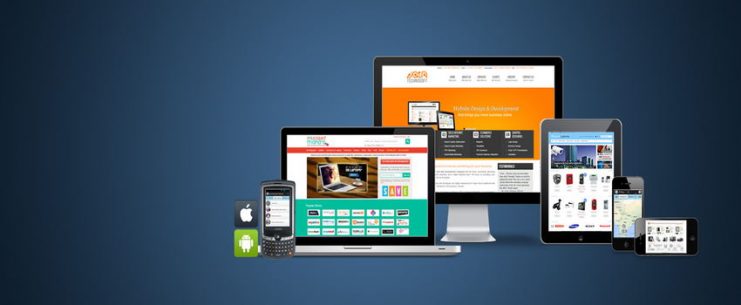“My mechanic told me, ‘He couldn’t repair my brakes, so he made my horn louder.’” – Comedian, Steven Wright
We all want our websites to be more effective, and if you’re like most business people you are constantly searching the Web for anything that will help. What you find is a cabal of experts armed with statistics, analysis, charts and graphs all pointing to how they can get you high-up on the search engines and drive more traffic to your site. The problem is that like Steven Wright’s mechanic these guys are adjusting your horn when it’s your brakes that need fixing.
There is little point in attracting more visitors to your site if your site has little of interest to say. Even if your site is jammed packed with useful products, services and solutions if it doesn’t connect with your audience, they will never invest the time necessary for you to make your case.

When websites fail it’s most often because they do not function effectively as your primary communication tool. The Web is overcrowded with options and unless you’re prepared to deliver a compelling differentiating presentation you will be quickly dismissed as irrelevant. Let’s face it; business is tough, probably tougher than it’s ever been before.
Something is Missing
You’ve done all the technical tweaks and responded to all the research and analytics. You’re blogging, micro-blogging, social networking, and search optimizing, but still something is not quite right, something is missing. What’s the missing ingredient? You know it’s out there, but you can’t for the life of you figure out what it is.
You know the Web offers the potential to access new markets, find new customers, and reach new heights, but with all that opportunity, the results always seem just out of reach. If research and analytics were the answer you’d already be rich. Of course it was an over-reliance on research that brought us the Edsel, New Coke, and that wonderful Wall Street goody called Derivatives, one of the greatest investment boondoggles of our time.
There is something artificially comforting about putting your faith in seemingly logical yet unfathomable solutions based on indecipherable scientific modeling and over-hyped research analysis, all brought to you by computer scientists and mathematicians who never ran a marketing department or launched a new product or business.
Business leaders have adopted the attitude that, “It must be right, because I sure as heck don’t understand it.” And when it all goes wrong, or results are anemic, well, “What are you going to do? It’s not my fault, it all looked good on paper.” Ad agencies and Wall Street have been getting away with this kind of bunkum for decades, and look at the mess they’ve made of things.
What’s It All About, Alfie?
Business success is all about your ability to engage your audience with a message that compels them to action. Simply put, your business relies on your ability to communicate. Eureka!
And your website is the best communication vehicle you have. The question is how do you use your website to communicate your marketing message in the most engaging, compelling, and memorable manner? What is the missing ingredient that will turn your scientifically sterile online cookie-cutter presentation into something that cuts through the massive sameness of Internet clutter, and makes a statement that your audience will respond to?
Finding Your Emotional and Psychological Value Proposition
One of the hardest things for tough-minded business people to accept is that sales and marketing success is based on the subconscious emotional and psychological appeal of a brand. That’s the reason, reliance on feature selling rarely works, and only tends to commoditize a product or service – the guy with the most bells and whistles for the least amount of money wins, and why would you want to play that game?
Even the most casual market observer must recognize that all leading brands have one thing in common, no matter what they sell: the promise of their brand is based on a concept that is established through an emotional or psychological appeal. Apple is about thinking and acting creatively without the worry of technical issues; Starbucks is about reconnecting to the original coffee break ideal of a relaxing oasis away from the hustle bustle of everyday life; and Ikea is about stylish living on a budget. Each concept appeals to the deep-seated desires of the targeted audience. It is this singular concept that makes each of these companies special and different from their competition; it is the message that all their marketing, advertising, and promotion is based upon, and it is the true value they offer their audience that attracts interest, holds attention, and delivers promise.
Implementing Your Emotional and Psychological Value Proposition
In order to implement a company’s emotional and psychological value proposition, we use a process called the ConceptCreator. It starts with various sales’ points that need to be covered. Based on the supplied information, we develop a focused marketing concept using the Law of Dissatisfaction that enables us to discover the experiential human subtext of why people will want what you sell. The presentation concept is boiled-down to a movie-style logline that states the brand story to be presented in the Web Video campaign.
How Much Is A Concept Worth?
“Wait a minute – did he say a movie-style logline? That sure doesn’t sound business-like, and I never heard any corporate CEO or MBA talk about movie loglines.” Maybe so, but think about it. Hollywood studios spend enormous sums of money to produce a movie with the potential of making hundreds of millions of dollars, and each financial investment starts with someone coming up with a clever logline that captures the imagination. Television commercials can cost ten thousand dollars a second to produce and without a guiding conceptual premise they become DOA when implemented. So why wouldn’t you start your Web Video campaign using the same proven formula.
The logline, mission statement, or elevator pitch if you prefer needs to state the characters, goals, obstacles, differentiating factors, and resolution within the context of a story scenario.
For Instance…
If it works for the movie industry will it work for the advertising and marketing industry? Let’s take a look at one of the most successful, popular, iconic marketing campaigns of the last number of years, The MAC versus PC campaign.
Example Logline Concept: A stylish, pleasant, mild-mannered young man verbally spars with his geeky competitive opposite (characters) in a series of humorous, relatable incidents (story scenario) that illustrate the people-friendly advantages (resolution) of the brand compared to its rigid, unbending competitor (differentiating factor) whose sheer size dominates the market (obstacle) in an effort to win the hearts and minds of the computer buying audience (goal). – The MAC Versus PC Ad Campaign.
“The Time Has Come The Walrus Said…”
– Lewis Carroll from ‘Through the Looking Glass and What Alice Found There,’ 1892
The time has come to realize that Web Video is the best communication tactic available to deliver your marketing message to a worldwide audience; an audience that craves answers and resolution to their every need, concern and desire. It is not good enough to list a bunch of features and hackneyed bulleted points or even to dump pages and pages of search engine optimized hard-to-read text, especially when it’s aimed at an audience raised on television, movies, music and video games. We must learn to speak the language of the audience, and use the appropriate communication tools they can understand in a way that connects on a human level.
It all starts with finding the emotional and psychological value proposition your product or service promises. In a world of frustrated, cranky, attention deficit consumers, the onus is on you to present what you offer in a way that relates to the human elements that make your brand relevant.
Please rate this artcle






